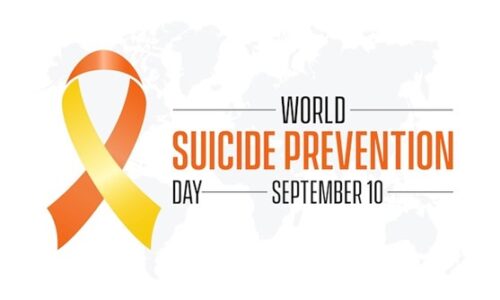Suicide rates in Tasmania have been a concerning issue for years, with the state consistently having one of the highest rates of suicide in Australia. The reasons behind this high rate are complex and multifaceted, but it is clear that effective suicide intervention and prevention strategies are crucial. One organisation that plays a key role in this area is CALM Suicide Awareness training Tasmania. This training provides comprehensive information aimed at equipping individuals with the skills and knowledge necessary to intervene and support individuals at risk of suicide. By addressing the underlying factors contributing to the high suicide rates in Tasmania, CALM Suicide Awareness training Tasmania is making a significant impact on the wellbeing of the community.
During 2021, 80 Tasmanians died by suicide (19 males, 61 females). It’s down from the 87 recorded in 2020.
Among all states with age-standardised suicide rates, Tasmania had the fourth-lowest (13.5 per 100,000). Compared to the national age-standardised suicide rate (12.0 per 100,000), the age-standardised suicide rate was higher. Male suicide rates (20.9 per 100,000) were lower than those seen in 2020 (25.1). Female suicide rates cannot be published due to lack of age-standardisation.
Greater Hobart had a lower suicide rate than the rest of Tasmania. Almost all states and territories showed a similar trend.
Hobart’s standardised rate decreased from 2020 (16.9 per 100,000) to 9.0 in 2019. Compared to 2020 (13.5 per 100,000), Tasmania’s standardised rate increased by 17.0.
Suicide and work-related stress are closely related
Providing purpose and solidarity to people is a benefit of work that works well and fosters social relationships. In the event of social structures like work falling apart, the individual suffers, and sometimes suicide is the result. Workers who see themselves solely as a source of profit or an obstacle may feel disconnected, which can lead to suicidal thoughts. As a part of this article, we will have the opportunity to examine Tasmania’s suicide rates.
There’s been a lot of talk about mental health literacy at work lately, but it may have been a misdirection. The notion that mental health symptoms and suicide crises are associated with mental disorders rather than workplace conditions is one tactic used by workplaces to minimise their role. Reduce the suicide rates in Tasmania is priority, we are losing way too many people for suicide.
Accidents at work
There is a great deal of emphasis on worker safety in many industries, so industries routinely monitor trends in workplace morbidity and mortality. Safety professionals have historically ignored suicide because most of the suicides don’t occur at work.
The cause of workplace fatalities is almost always determined to be accidental, and a deeper investigation is not conducted into intent to die. As there is no deeper investigation, more safety training is suggested as the only remedy. Although safety training will help people who didn’t intend to harm themselves, it won’t help people who died on purpose.
Law enforcement investigates suicides on job sites and traumatised workers can’t work while an investigation is ongoing. It’s not uncommon for co-workers to feel traumatised and grief-stricken after a suicide at work; some aren’t ready to return to work after one. Likewise, suicide deaths can completely halt operations in other industries, such as construction and transportation, while the company still has to pay all employees and deliverables.
Those who work in a company or industry that’s prone to suicide usually worry their health is at risk.
Suicide and work-related stress are closely related
Employees’ perceptions of toxic work environments and toxic work demands have largely been ignored in discussions about suicide prevention. Despite this, there’s evidence that job stress contributes to suicide death and attempts, even after taking mental health problems into consideration:
- Lack of autonomy in the workplace
- Lack of variety at work
- Family responsibilities become more difficult because of work demands
- Family demands make it difficult to fulfil the work role in part due to conflict between family and work
- A feeling of being trapped and dissatisfaction at work
- Unmotivated or unfulfilling work
- Limited job control, like not being able to make decisions
- Poor working relationships due to a lack of supervision and team support
- A lot of work, constant pressure, and overtime
- A perceived lack of financial compensation, disrespect or status can lead to an effort-reward imbalance
- A feeling that one is at risk of losing his or her employment, which is accompanied by anxiety about losing it
- Working environment bullying, harassment, and hazing
- Discrimination and prejudice at work
- Trauma from work
- Sleep disruptions from work
- Environmental factors that cause illness or pain, such as toxic work-design
- The work culture is bad when it comes to self-care and maladaptive coping strategies, like drinking and using drugs at work.
The risk of suicide is clearly increased by job stressors. A key component of suicide prevention strategies in the workplace should be job stress prevention and control.
Find out if there are any at-risk employees
It is also important to be able to identify risk factors as part of suicide prevention in the workplace. In order to prevent suicide, it is important to recognise the warning signs of suicidal thoughts.
Keeping an eye on everyone’s mental health and wellbeing is important, but don’t single anybody out. Get employees talking about how they’re feeling by creating conversations they’ll enjoy. Include this as a mandatory topic of conversation in your monthly or quarterly meetings. Alternatively, you may wish to consider implementing a wellness program for your employees.
Establishing a suicide prevention information center
The creation of a dedicated resource center that employees can utilise for help and support is another way to prevent suicide in the workplace. Things like this might be included:
External support services, such as telephone helplines and counselling
- Reasonable adjustments and mental health policies in organisations
- Suicidal thoughts and how to talk about them
- Mental health symptoms and signs
- How to support a struggling colleague.
In response to the alarming suicide rates in Tasmania, there is a growing need for suicide intervention and prevention training. WHS and Training Compliance Solutions are now providing CALM Suicide Awareness training in Tasmania. This training equips individuals with the necessary skills and knowledge to identify warning signs and intervene effectively in suicidal situations. By offering this training, companies and organisations can play a crucial role in raising awareness and providing support to those at risk. With the aim of reducing the number of suicides in Tasmania, CALM Suicide Awareness training is a vital step towards creating a safer and more compassionate community.
Offer elearning programs. Mental Health First Aid, CALM Suicide Intervention Skills and CALM Suicide Awareness training Tasmania to employees and management.
In Tasmanian workplaces, CALM Suicide Intervention Skills and CALM Suicide Awareness training are one of the most effective ways to prevent suicide. Programs like this can be used to support someone experiencing suicidal thoughts through intervention and prevention.
The fact that employees and managers are trained in CALM Suicide Intervention Skills and CALM Suicide Awareness assures colleagues that someone is always available to support them. You could save someone’s life in a crisis by doing this.












